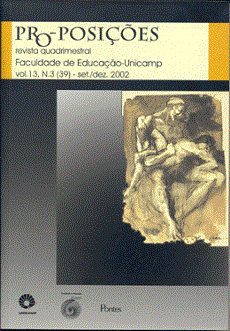Resumen
Da cicatriz de Ulisses aos rastros/restos, a memória e a lembrança. A cicatriz deixada pela experiência, portando a promessa que a história, apesar de todos os sofrimentos, terminaria bem. Com ela e através dela guardam-se a continuidade de gerações (filiações), alianças e eficácia da palavra, narrativa. É ela memória e lembrança, história. Na ferida que não cicatriza, o trauma, difícil, senão impossível narração. E a memória e a lembrança são portadas pela escrita, rastro privilegiado e duradouro que os homens deixam de si. Porém, a escrita é, hoje, não mais esse rastro, mas o efêmero, o nãointencional, os restos. No entanto, podemos - e talvez devamos - continuar a decifrar os rastros e a recolher os restos. Tarefa silenciosa, anônima, mas imprescindível do narrador autêntico.
Abstract:
From Ulysses' scar to the trace/rests, the memory and the remembrance. The scar left by the experience, carrying the promise that the history, despite ali suffering, would end well. With it and through it the continuity of generations (affiliations), alliances and efficacy of the word, narrative. It is memory and remembrance, history. In the wound that does not heal, the trauma, difficult, if not impossible narration. And the writing, privileged and lasting trace that the men leave of themselves carry the memory and remembrance. However, the writing is, nowadays, no longer this trace, but the ephemeral, non-intentional, the rests. Nevertheless, we can - and maybe we must - keep on deciphering the traces and guarding the rests. Silent, anonymous, but vital task of the authentic narrator.
Key-words: Scar. Semory and remembrance. History. Writing. Trace. Rests
Citas
ASSMANN, AIeida. Erinnerungsriiume. Formen und Wandlungen des kulturellen Gedâ'chtnisses. Munique: c.H. Beck, 1999.
AUERBACH, Erich. Mímesis. Bem: Francke Verlag, 1946. Tradução brasileira - São Paulo: Editora Perspectiva, 1976.
BAUDELAlRE. OeuvresCompletes.Gallimard, Paris: Ed. Pléiade, 1961.
BENJAMIN, W ObrasescolhidasL Tradução de S. P. Rouanet São Paulo: Ed. Brasiliense, 1985.
. O Paris do SegundoImPérioem Baudelaire.Capítulo "A Modernidade". In: BENJAMIN, Walter. Obras Escolhidasm. Tradução (modificada) de José Carlos Martins Barbosa. São Paulo: Ed. Brasiliense, 1989.
BRECHT, Bertold. Poemas.Seleção e tradução de Paulo Cesar Souza. São Paulo: Ed. Brasiliense, 1986.
DERRIDA, Jacques. A Farmáciade Platão.São Paulo: Ed. Iluminuras, 1991.
GINZBURG, Carlo. Mitos, emblemas,sinais.São Paulo: Ed. Cia. das Letras, 1991.
HOMERo. Odisséia.Tradução de Antônio Pinto de Carvalho. São Paulo: Editora Abril, 1978.
LEVI, Primo. É isto um homem? Rio de Janeiro: Ed. Rocco, 1988.
LEVI, Primo. Os cifôgadose ossobreviventes.São Paulo: Ed. Paz e Terra, 1989.
LEVINAS, Emmanuel. Humanismo do outro homem.Tradução (ligeiramente modificada) de Pergentino Pivato. Petrópolis: Ed. Vozes, t 993.
VERNANT, Jean Pierre. L'individu, Ia mor!,I'amour.Paris: Gallimard, 1989.
A Proposições utiliza a licença do Creative Commons (CC), preservando assim, a integridade dos artigos em ambiente de acesso aberto.

